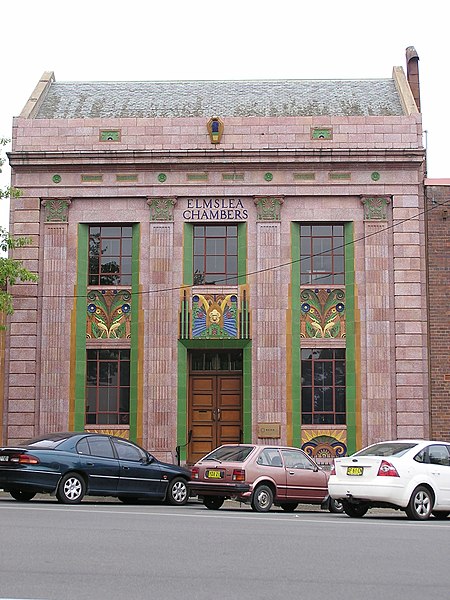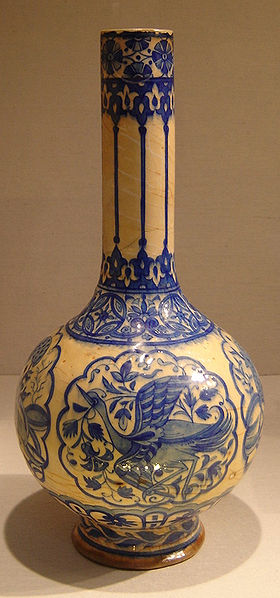Glazed architectural terra-cotta
Glazed architectural terra cotta is a ceramic masonry building material used as a decorative skin. It featured widely in the 'terracotta revival' from the 1880s until the 1930s. It was used in the UK, United States, Canada and Australia and is still one of the most common building materials found in U.S. urban environments. It is the glazed version of architectural terracotta; the material in both its glazed and unglazed versions is sturdy and relatively inexpensive, and can be molded into richly ornamented detail. Glazed terra-cotta played a significant role in architectural styles such as the Chicago School and Beaux-Arts architecture.
Elmslea Chambers in Goulburn, New South Wales, Australia - built in 1933, it was one of the first buildings in Australia to use coloured polychrome terracotta in its façade which features a fine relief of birds, flowers, leaves and typical Art Deco sunbursts under the windows.
Polychrome glazed capital, circa 1915. Randalls Lost NYC collection
White glazed Sullivanesque, circa 1925. Randalls Lost NYC collection
Gloucester Road station, Piccadilly line, with the sang de boeuf glazed tiles used on many London Underground station buildings.
Ceramic glaze, or simply glaze, is a glassy coating on ceramics. It is used for decoration, to ensure the item is impermeable to liquids and to minimise the adherence of pollutants.
Composite body, painted, and glazed bottle. Iran, 16th century (Metropolitan Museum of Art)
Detail of dripping rice-straw ash glaze (top), Japan, 1852
İznik tiles in the Enderûn Library, Topkapi Palace, Istanbul
Sancai coloured lead-glazes in a Tang dynasty tomb guardian.








